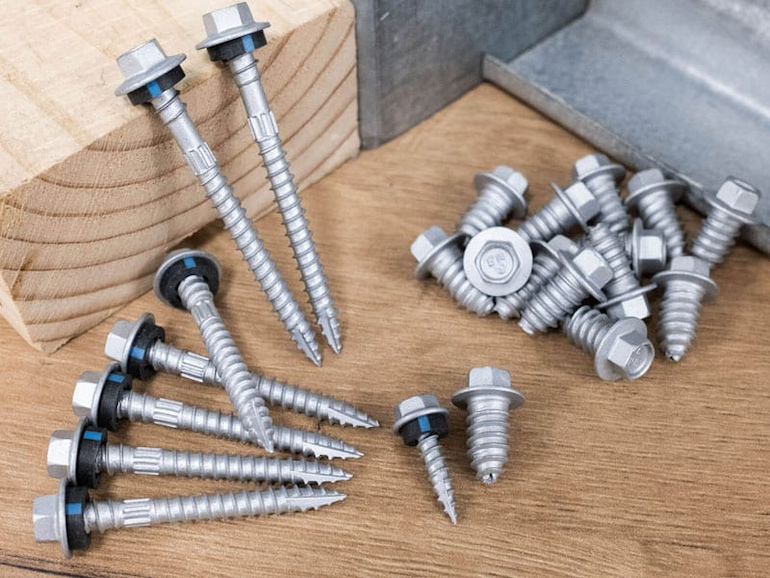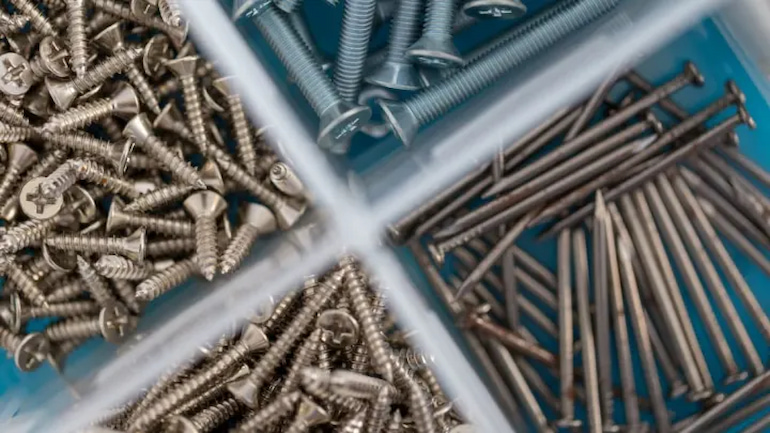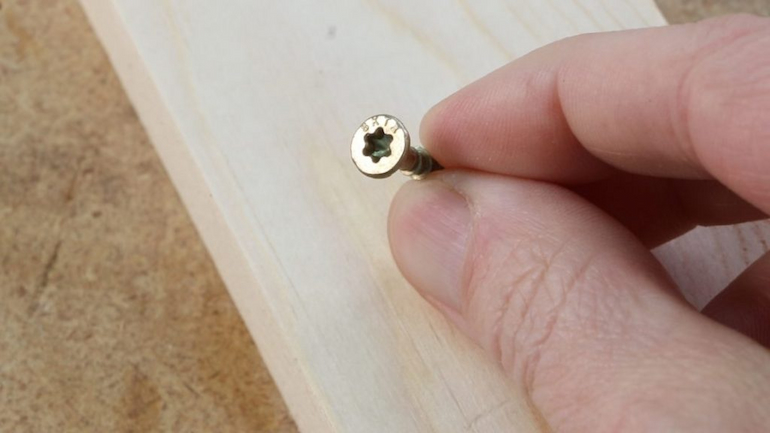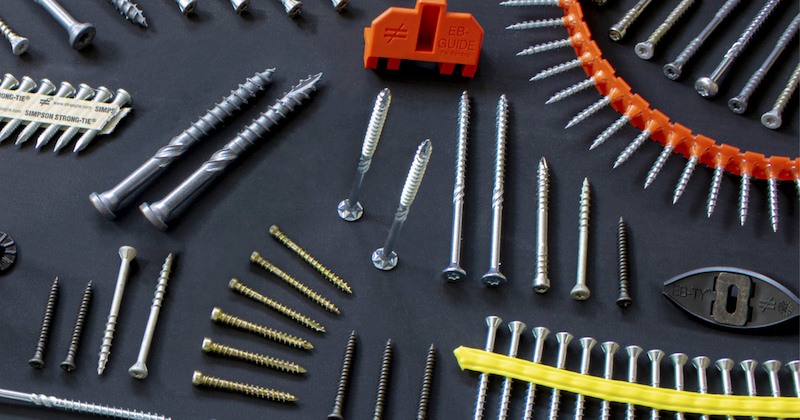Everything You Need to Know About Screws
You’d be hard-pressed to find a simpler or more practical piece of hardware anywhere in the world than the ubiquitous screw.
From ordinary flat-head Phillips sheet metal fasteners to exotic pentagonal pin button heads, there’s a screw for every job imaginable… along with another screw that could possibly do the job even better.
Let’s take a moment to decipher some of the characteristics that distinguish one screw from another; and ultimately, the next time you see a screw description that includes a slotted cheese or a slotted mushroom, you’ll know that it’s not talking about what you’re having for lunch.
Categorizing Screws From the Bottom Up
If you saw a screw description that specified “1/4 X 1 3/4 Rh Sl Ss 316 Mac Screw”, would you know what it is? Believe it or not, screw descriptions are a lot more straightforward than they seem. In fact, deciphering these descriptions when you’re looking for premium screws and fasteners is as easy as examining a screw from the bottom up starting first with the critical diameter, pitch, and length measurements of its body, and then moving up to the head type and the driving style.
The majority of fasteners that you’ll regularly encounter can be categorized by this approach. And fortunately, many of the general head and drive characteristics overlap which, instead of making categorizing their visible parts more difficult, actually helps to make them clearer.
Crucial Screw Body Dimensions

Every fastener has 3 crucial threaded body measurements: diameter, pitch, and length. And no matter where you’re shopping for screws, Australia or somewhere else, you’ll find them expressed in either metric or imperial units.
- Diameter. Excluding the head, the diameter of a fastener is the measurement from the outside of one thread to the outside of an opposing thread. With imperial measurements less than ¼”, the diameter is going to be expressed as a number going from smallest to largest, #0 – #14.
- Pitch. This is the spacing between the threads of the fastener, and it’s ordinarily measured as the number of threads per inch on imperial fasteners, and as the distance between individual threads on metric fasteners.
- Length. With the exception of flathead screws where the entire length of the fastener is measured, the length is the distance from the inner face of the head to the tip of the body.
These measurements, especially pitch, are crucial for determining the type of material the fastener can be used with. Coarse threaded screws with a taller pitch are fantastic for everyday use, while finer threaded screws with a shorter pitch are better for harder, denser materials.
Screw Head Types For the Right Grip and Good Looks

There are 5 major head types that you’ll see with screws online, and almost every other head type is derived from one of them:
- Flathead (FH). Also known as countersunk screws, these fasteners have a flat outer face and a tapered inner face that allows them to sit flush with the attaching surface.
- Pan head (PN). Easily recognizable by their inverted pan shape, these circular-shaped fasteners are slightly rounded at the top, have flat inner faces, and are regularly substituted by fillister and binding heads.
- Round (RH). These hemispherical-shaped fastener heads also have flat inner faces, and are similar to dome head screws and cup head bolts. A larger diameter round head is a mushroom head.
- Oval (OH). Oval head screws combine the curvature of a round head screw with the tapered inner face of a flathead screw. The result is essentially a countersunk round head with a slight convex curve.
- Hex (HX). Hex cap screws have a hex-shaped head that can sometimes include a flange. If a hex head were cylindrical instead of hexagonal, it would be a cheese head.
Although there are many more head types, you can still see the range of variations that are possible only within these 5. This extensive head type overlap shows how the balance of gripping power and esthetics can affect everything from the massive hex cap screws on mining excavators to the delicate faceplate screws on light switch covers.
There’s far less flexibility when it comes to driving styles, though. They’re tied directly to the amount of force that can be exerted on a screw, and they make a big difference when it comes to fastener design.
Knowing Which Drive Gives the Best Results
There are 5 major drive styles (recesses) that you’ll encounter when you’re ready to buy screws, and they can be found on just about any type of head.
- Slotted (SL). Slotted drives consist of a horizontal groove that runs diagonally across the face of a screw.
- Phillips (PH). These high-torque drives feature a cross-shaped groove across the face of a screw, and are the basis for the very similar Pozidriv, Supadriv, and Frearson drive designs.
- Hex (HCS). Used exclusively for hex head screws, hex drives require either a hex wrench or key to open.
- Torx (Torx). This 6-lobed, star-shaped drive is known for the amount of torque it handles when tightening.
- Robertson (Robertson). This is a square, moderate torque drive that’s highly regarded for its quick tool seating and ease of use.
It’s important to remember that the depth of the drive recess is just as important as its shape for preventing “cam out”: the process that occurs when a screwdriver slips out of the recess. A true Phillips drive is designed to allow cam out to prevent the fastener from being over-torqued or stripped out, while cam out is virtually impossible with nearly identical Pozidriv and Supadriv drives.
In short, if you’re shopping for screws for sale, you want to consider how much torque you expect to apply to it, and choose the drive that’s most compatible with it.
Knowing Which Drive to Use With Which Metal

The final piece of necessary screw knowledge only requires knowing what you’ll be using the screw for.
- Wood screws (WS). These are meant exclusively for wood, and can have varying thread pitches depending on the wood’s density.
- Sheet metal screws (SMS). These are strictly for fastening metal parts together, and can also have varying thread pitches and finishes depending on the metal’s thickness and environmental concerns.
- Machine screws (MAC). These all-purpose screws are designed for use with metal or plastic, and normally have finer threads.
The Final Word
At the end of the day, becoming familiar with fastener descriptions, and understanding what and where their most critical measures are is going to make a world of difference in how you perceive them. It’s also priceless knowledge that you’re shopping for fasteners online, which is going to save you hours of frustration.
By following this simple approach, you can search for premium screws and fasteners with confidence. You don’t have to walk around with a screw in your hand anymore, and you’ll know precisely what you’re looking for at all times.

